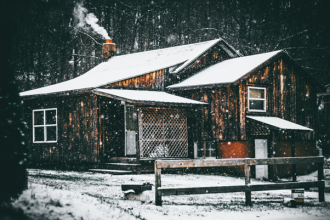Young children can have difficulty generating their body heat and may be at risk of hypothermia or frostbite when exposed to extreme cold. Dressing them correctly is essential for their safety and enjoyment.
Layering their clothing will keep them warm. Start with a base layer that wicks moisture. A sweater or fleece jacket can be layered over this. Add a protective outer shell that is breathable, windproof and waterproof.
Keep It Light
A light layer of clothing enables kids to play comfortably and adapt to weather changes by adding or removing layers as needed. Silk is an excellent choice for a base layer, as it helps wick moisture away from the skin and allows kids to move freely.
For a mid-layer, choose a wool sweater or fleece jacket that will insulate and keep kids warm. Finally, choose a waterproof outer layer to protect against snow, wind and rain. You can find the latest trends in children’s winter clothing in some online shops like Janie and Jack.
Young children are more prone to hypothermia and frostbite than adults, so it’s important to be mindful of how long they spend outdoors. Keeping them in a lightweight, protective coat, gloves, hat, and boots will help ensure they stay safe. Packing a thermos of soup or hot chocolate for them when they return inside is also a good idea. This will help them re-warm up and avoid dry skin, which can be uncomfortable. It can also lead to eczema, which often looks like flaky, red patches on the skin.
Keep It Waterproof
A waterproof layer is vital for cold weather, whether it’s a rain jacket or snow pants. This helps keep your kids warm and comfortable when playing outside. You should choose a layer made from high-quality materials, such as wool, insulating even when wet.
Remember that little fingers, toes and ears lose heat disproportionately, so they’re a good place to invest in extra warmth for them too. Look for a hat, mittens and insulated gloves.
Once your kids are old enough to dress, teaching them the importance of layers and a warm winter wardrobe will give them a lifelong skill they can carry with them forever. Start them off with a base layer that’s thermal and breathable, then add in a fleece or wool sweater and finish with a warm coat and waterproof snow pants. For extended outdoor adventures, consider getting a 3-in-1 jacket that zips in an inner insulated coat so they can easily adapt to changing temperatures without freezing or overheating.
Keep It Fitted
Choosing loose, lightweight, well-fitted clothing and snug in cold temperatures will keep your kids warm. Puffy, bulky outerwear can make it difficult for them to move around and stay active.
Kids need an insulated base layer to retain their body heat, plus a fleece middle layer to add warmth. They must also wear a wind and waterproof coat to protect them from snow, rain and winds.
Depending on your climate, you may need to invest more in insulation and weather-proof outerwear than in milder, wetter climates. In cold, dry temperatures, lightweight, breathable synthetic insulation with moisture management properties is a good choice for the base layer. For the mid-layer, you want a roomy but flexible fleece that’s easy to remove if your child gets overheated. And for the outer layer, you need a warm coat to keep your children from getting chilled while playing in the snow or on a cold winter hike.














